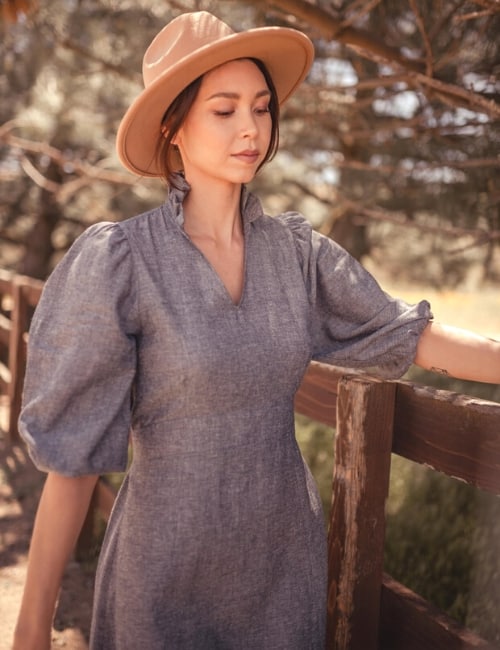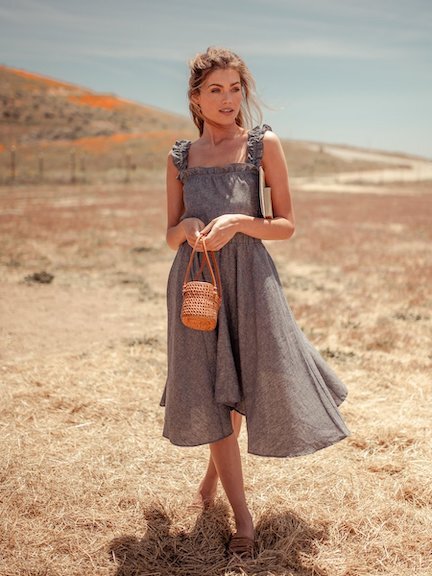Good Reasons To Selecting Bamboo Clothing
Wiki Article
Why Is Hemp So Much More Biodegradable, Durable And Regenerative Than Cotton, For Instance?
The inherent properties of hemp and the way it's grown is what makes it more biodegradable and long-lasting than cotton. Here's why- Biodegradability-
Natural Fiber Natural Fiber Hemp is made of a natural plant fibre, that is biodegradable. Hemp clothing and textiles decompose naturally over time. They then return to the soil, not leaving behind a long-lasting trash. This is in contrast to synthetic fibers like polyester, which can require hundreds of years to decompose.
Hemp textiles are free of synthetic additives and chemical treatments that can hinder biodegradability. Cotton textiles are treated with synthetic chemical additives like certain finishings or dyes that slow the biodegradation.
Durability-
Hemp fibers have earned a reputation for their durability and strength. Hemp clothes and textiles are less susceptible to tear and wear and last longer in comparison to cotton-based products. This makes hemp clothes can stand up to many washes and wear cycles prior to showing signs of deterioration.
Hemp fabric is less prone to pill than cotton. This is a major factor in the quality and durability of hemp fabrics.
Regenerative Agriculture-
Soil health Hemp cultivation can be regenerative when done in a sustainable manner. The roots deep in hemp can help prevent erosion and soil compaction and may increase soil health via the aeration process and increased microbial activity. This regenerative aspect will make the soil suitable for future crops.
Low environmental impact Sustainable hemp cultivation techniques require the use of a minimal amount of pesticides. Cotton farming with synthetic chemicals is more likely to cause soil and water degradation.
Water Efficiency-
Hemp requires less water to growth than cotton. Because of its drought resistance it is able to be grown with little or no irrigation. It is a more efficient use of water, particularly in regions with limited water resources.
Hemp is an excellent crop to be included in rotational systems. It will help improve the soil's health as well as decrease the likelihood of disease development and soil loss. In the cotton industry the practice of rotating crops is much less common.
Hemp is adaptable and can be utilized in many ways, like for clothing, textiles or even building materials. Hemp's versatility means that it can be used to help support many industries with sustainable, regenerative practices.
It's important that you know that hemp is a great product, however it could be a problem if it is not sustainable, based on your processing and farming practices. It is recommended to select hemp products that are produced using eco-friendly and ethical practices. This will increase the environmental benefits of hemp. In the same way using organic cotton could help reduce some of the environmental concerns related to conventional cotton production. View the recommended helpful hints on hemp clothing for blog tips including hemp clothing wholesale, patagonia volley shorts, hemp shirts, afends jesse dress, organic hemp fabric, jungmaven t shirt, hemp athletic wear, hemp shorts mens, jungmaven clothing, hemp sweatpants and more.

What Is It That Gives Hemp Fibres Its Breathable, Moisture-Wicking And Thermoregulatory Properties?
Hemp fibers possess unique structural and chemical properties that make them breathable thermoregulation and moisture wicking. These properties are due to the following- Microscopical Structure- Hemp has a porous and hollow structure that permits air circulation throughout the fibers. This natural porosity makes hemp fabrics extremely air-tight. This structure, when weaved or knitted, permits air to flow, promoting cooling, while also preventing the accumulation of heat and humidity on the body.
Hemp Fibers absorb moisture and Wicking- Hemp fibres are hydrophilic. This means that they are affixed to water. They can also easily absorb moisture. The fibers in hemp clothing absorb moisture, sweat, and help to prevent feeling like your skin is damp. The fibers of hemp can also help in removing water from your body, allows it to evaporate more quickly. In the course of physical activity and in extreme temperatures, this ability to wick moisture helps keep you cool and dry.
Hemp fibers are naturally insulating properties. When cold, they trap heat near your body and provide warmth. They also allow excessive heat and moisture to escape during hot weather and help to get cool. Hemp clothing is appropriate for all temperatures and activities due to its thermoregulating properties.
Hemp fibers contain natural antimicrobial qualities that help prevent the growth of odor-causing bacteria. This feature contributes towards the freshness and protection from the odor of hemp clothing in time of training.
Hemp clothes are durable and long-lasting. It can be washed and worn over and over without losing its breathability and ability to wick moisture away. This endurance extends the life of hemp clothing. It reduces the need for replacements and the environmental impact.
UV Protection- Hemp fibres offer a natural UV protection that shields your skin from harmful UV radiation. The hemp's UV blocking capability is ideal for outdoor activities.
It's crucial to understand that these properties are inherent in hemp fibers and aren't dependent on chemical treatment or other additives. Hemp clothing is durable, comfortable and environmentally friendly due to its inherent properties. It's an excellent choice for activewear clothing as well as outdoor clothes and clothing suitable for hot conditions. Because hemp fibers are processed and then woven, they retain their natural qualities and make them a green, functional fabric. Check out the best hemp clothes hints for site info including hemp baja hoodie, hemp yoga clothes, hemp active wear, organic hemp underwear, mens hemp clothing, jungmaven sweatshirt, organic hemp hoodie, hemp dress, patagonia hemp shorts, patagonia work pants hemp and more.
What are the major differences between bamboo and hemp fibers?
Two different fibers, bamboo and hemp can be used in the production of textiles. Each of them has its own characteristics and unique characteristics. These are the main differences between hemp and bamboo fibers- 1. Plant Source-
Hemp- Hemp fibers are made from the stalks of the hemp plant, specifically from the bast fibers that are in the outer layer. Hemp is a multi-faceted and rapidly-growing plant, has been used throughout the ages in various ways.
Bamboo- Bamboo fibers come by removing the woody part from the bamboo plant. Bamboo is grass that grows rapidly and is known for its sustainability.
2. Fiber Specifications-
Hemp Fibers Hemp fibers have a reputation for strength and durability. They are among the strongest natural fibers that soften after each wash which makes them ideal for long-lasting textiles.
Bamboo fibers are silky and soft. The fibers are less strong than hemp, and are more fragile. However they are highly sought-after for their comfort when used on the skin.
3. Texture-
Hemp- Hemp has a slightly rough texture, particularly when it is in its natural state. It's soft, but it is different from bamboo.
Bamboo The bamboo fabric is soft, silky, and luxuriously soft. It is often described by those who wear it as a mixture of silk and cotton.
4. Dryness and Breathability-
Hemp- Hemp fibers are naturally water-wicking and breathable, which allows air circulation and moisture absorption. They are able to keep you cool and dry during hot weather.
Bamboo is also extremely permeable, and it is able to wick away water. They also have micro-gaps which increase their ability to regulate humidity and temperature, ensuring you are at ease in all conditions.
5. Environmental Impact-
Hemp- Hemp fiber is an eco-friendly product because of its low requirement for water as well as its rapid growth rate as well as its resistant to pests. This means that it is less need for pesticides and herbicides. It is also able to absorb carbon dioxide from the atmosphere during its growth.
Bamboo is considered to be a sustainable material. It is highly robust, it grows quickly and needs only a tiny amount of water. Some varieties of bamboo are deemed extremely sustainable, like Moso bamboo.
6. Processing-
Hemp Fibers- Hemp fibers undergo extensive processing, which will be required to separate the outer bast from the wood core. Processing can involve Retting (decortication), mechanical separation, or the process of retting.
Bamboo- Bamboo fibers are typically obtained through a chemical process known as the rayon or viscose process. This involves the use of chemicals to break down bamboo fiber. Although this can cause environmental issues if not handled properly, some bamboo fabrics make use of closed-loop systems to decrease chemical waste.
7. Versatility-
Hemp- Hemp fibres can be used for a wide range of applications, including clothes, textiles and even paper. They are also great construction materials.
Bamboo Fibers The bamboo fibers are used in clothing, textiles and other products.
Summary The two types of bamboo offer unique benefits and are both sustainable. The choice between them depends on which qualities you seek in a cloth and also your preference for the environment. Follow the best bamboo clothing for website advice including bamboo tee shirts wholesale, faceplant pajamas, mens boxer shorts bamboo, bamboo workout clothes, bamboo t shirts mens, bamboo pants ladies, mens bamboo clothing, bamboo undergarments, bamboo shorts womens, bamboo sun hoody and more.

